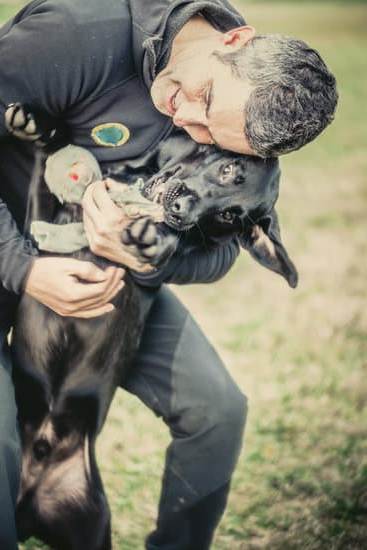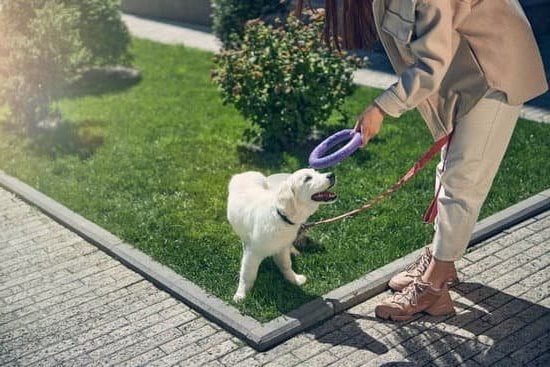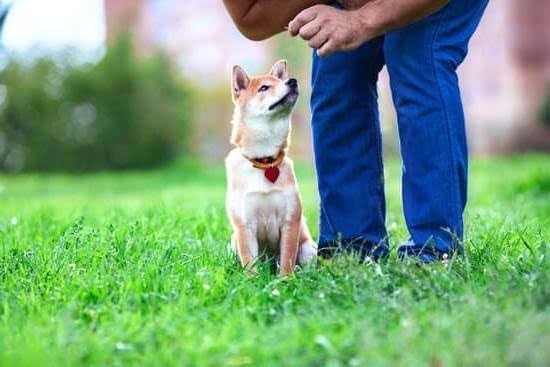Agility training is a crucial aspect of overall canine well-being, providing numerous physical and mental benefits for dogs. In this article, we will explore the importance of agility training for dogs and delve into the various aspects involved in training them.
Whether you are a dog owner looking to enhance your pet’s fitness and mental stimulation or someone interested in competing in agility competitions, this comprehensive guide will provide you with all the information you need to train your furry friend for agility.
Agility training offers a range of benefits for dogs, promoting improved fitness and mental stimulation. Dogs naturally thrive on physical activities that challenge their abilities, and engaging them in agility training can help fulfill these needs. By incorporating regular training sessions into their routine, dogs can build strength, flexibility, and endurance. Additionally, agility exercises provide mental stimulation as dogs navigate through obstacles, requiring them to think quickly and problem-solve in order to successfully complete each task.
To effectively train dogs for agility, it is important to understand the basics of this type of training beforehand. This includes familiarizing yourself with the necessary equipment and safety precautions involved.
From tunnels and hurdles to weave poles and A-frames, investing in quality equipment is essential for creating a safe and engaging environment for your dog’s training sessions. Additionally, understanding safety precautions will ensure that both you and your furry companion can enjoy this activity without any unnecessary risks.
In the following sections of this article, we will provide you with step-by-step instructions on setting up an agility training course from scratch. We will also cover essential skills needed for agility training such as teaching basic commands and handling techniques.
Moreover, conditioning exercises specifically designed for agility dogs will be discussed to help improve their speed and endurance levels throughout their training journey. By progressively increasing the difficulty level over time, you can further challenge your dog’s abilities while keeping their interest levels high.
As you progress through this article, we will also address common issues that may arise during agility training such as fear and lack of focus. Troubleshooting techniques will be provided to help you overcome these obstacles, ensuring a positive and successful training experience for both you and your dog. Additionally, we will explore how to incorporate agility training into your daily routine at home, offering tips and strategies for practicing even without specialized equipment.
Finally, for those looking to take their dog’s agility skills to the next level, we will delve into the world of competition and advanced training techniques. Whether you aspire to participate in local events or seek more complex challenges, this section will equip you with the knowledge needed to elevate your dog’s agility abilities.
The Benefits of Agility Training for Dogs
Agility training offers many benefits for dogs, both in terms of their physical fitness and mental stimulation. This section will explore these benefits in more detail and discuss why they are important for the overall well-being of dogs.
Improved Fitness:
Agility training is an excellent way to improve a dog’s fitness level. The various obstacles and exercises involved in agility courses require dogs to exert themselves physically, leading to increased cardiovascular endurance, muscle strength, and flexibility. Jumping over hurdles, weaving through poles, and navigating tunnels all contribute to building a strong, agile body.
To ensure that your dog reaps the full fitness benefits of agility training, it’s essential to incorporate conditioning exercises into their routine. These can include activities like high-intensity interval training (HIIT), which involves short bursts of intense exercise followed by periods of rest. Other exercises such as hill sprints or swimming can also help improve endurance and strengthen muscles.
Mental Stimulation:
In addition to its physical benefits, agility training provides dogs with valuable mental stimulation. The challenges presented by an agility course engage a dog’s problem-solving skills, focus, and concentration. As they navigate through each obstacle, dogs must make quick decisions and follow cues from their handlers.
Incorporating mental stimulation into a dog’s routine helps prevent boredom and can alleviate behavioral issues caused by excess energy or lack of mental engagement. Agility training provides an outlet for a dog’s natural instincts and drive while encouraging them to think critically and stay focused on the task at hand.
Overall Well-being:
The combined effects of improved fitness and mental stimulation make agility training an important aspect of a dog’s overall well-being. Regular participation in agility activities not only enhances physical health but also contributes to a happier, more contented canine.
With increased fitness levels comes improved stamina for day-to-day activities such as walks or playtime. Mentally stimulated dogs are less likely to exhibit destructive behavior or become anxious when left alone. Agility training also helps foster a strong bond between dog and owner, as it requires trust, communication, and collaboration.
Understanding the Basics of Agility Training
Agility training requires specific equipment to create a course that challenges and engages dogs. It is important to understand the basic equipment needed for agility training and the safety precautions that should be taken to ensure the well-being of both the dog and the handler.
Equipment Needed for Agility Training:
Agility Jumps
These are hurdles that dogs must jump over during the course. There are different types of jumps, such as single bar jumps, double bar jumps, tire jumps, and panel jumps. It is essential to choose jumps with adjustable heights depending on the size and ability of your dog.
Tunnels
Tunnels provide a fun and exciting element in agility training. Dogs learn to navigate through collapsible tunnels. They come in various shapes, lengths, and materials. It is crucial to ensure that tunnels are properly secured so they do not collapse while the dog is inside.
A-Frame
This obstacle consists of two ramps that meet at an apex resembling an “A” shape. Dogs are trained to climb up one side and descend down the other side in a controlled manner. It is essential to have a sturdy A-frame with a non-slip surface to prevent accidents.
Safety Precautions in Agility Training:
Warm-Up Exercises
Before starting any agility training session, it is important to warm up your dog’s muscles with some light exercises or stretches. This helps prevent injuries and prepares their body for physical activity.
Proper Fit of Equipment
Ensure that all equipment used fits properly for your dog’s size and breed. Ill-fitting equipment can cause discomfort or even injuries during training.
Supervision
Always supervise your dog during agility training sessions. This allows you to monitor their progress, correct any mistakes, and ensure their safety.
Positive Reinforcement
Use positive reinforcement techniques, such as treats and praise, to encourage your dog during training sessions. This creates a positive association with the course and motivates them to perform well.
Understanding the basics of agility training equipment and following safety precautions will contribute to a successful and safe training experience for both you and your dog. By incorporating these aspects into your agility training routine, you can help your dog develop their physical abilities while keeping them safe from harm.
Setting up an Agility Training Course
Creating an agility training course is a crucial aspect of training your dog for agility. A well-designed course not only ensures the safety of both you and your furry friend but also provides a structured environment for learning and improvement. In this section, we will discuss the key factors to consider when setting up an agility training course, including the design of obstacles and their organization.
Designing the Obstacles
When designing the obstacles for your agility training course, it is important to choose ones that are suitable for your dog’s size, breed, and ability level. For beginners, start with basic hurdles or low jumps that are easy to navigate. As your dog progresses, you can introduce more challenging obstacles such as weave poles, tunnels, and A-frames. Remember to make adjustments based on your dog’s comfort level and physical capabilities.
It is also essential to ensure that all equipment used in the training course is safe and sturdy. Check for any sharp edges or loose parts that could potentially harm your dog. Additionally, make sure that the height or width of each obstacle is appropriately adjusted to match your dog’s size. This will help prevent injuries and build confidence as they successfully clear each obstacle.
Organizing the Obstacles
The arrangement of obstacles within your agility training course plays a significant role in creating a smooth flow during practice sessions. Consider placing obstacles strategically so that there is enough space for your dog to approach each one comfortably without feeling cramped or overwhelmed.
One common layout option is called a “loop course,” where you arrange the obstacles in a circular pattern. This allows you to continuously train without interrupting the flow, enabling better focus and coordination from your dog. Another popular option is the “straight line course,” where you set up obstacles in a straight line with adequate spacing between them to allow for smooth transitions.
When organizing the course, it is also important to consider the safety of both you and your dog. Ensure that there is enough space for you to move freely around the course without tripping over obstacles or getting in the way of your dog’s path.
By taking the time to carefully design and organize your agility training course, you are setting up a conducive environment for effective training sessions. Remember to always prioritize safety and adjust the difficulty level as your dog progresses in their agility skills. With a well-designed course, both you and your furry companion will be well-prepared to take on any agility challenge that comes your way.
Essential Skills for Agility Training
Agility training for dogs requires not only physical strength and endurance, but also the ability to follow commands and respond to handling techniques. In this section, we will discuss the essential skills that need to be taught in order to successfully train a dog for agility.
One of the most important skills for agility training is teaching basic commands. Dogs should have a solid understanding of commands such as sit, stay, come, and lie down. These commands form the foundation for more advanced agility maneuvers and are crucial for safety during training sessions. The dog should be able to reliably respond to these commands even when distractions are present.
In addition to basic commands, proper handling techniques are essential for effective communication between the handler and the dog during agility training. The handler must learn how to give clear cues and signals to direct the dog through an obstacle course. This involves body language, voice cues, and use of visual targets or markers. Proper timing is crucial when giving instructions, as dogs rely on immediate feedback to understand what is expected of them.
It is important to note that teaching these skills requires patience, consistency, and positive reinforcement. Training sessions should be short and focused, with frequent breaks for rest and reward. Positive reinforcement techniques such as treats or verbal praise can help motivate the dog and create a positive association with agility training.
| Command | Description |
|---|---|
| Sit | The dog should lower its hindquarters onto the ground. |
| Stay | The dog should remain in place until given further instruction. |
| Come | The dog should move towards the handler. |
| Lie Down | The dog should lower its entire body onto the ground. |
Building Speed and Endurance
Agility dogs need to have not only the agility to navigate obstacles quickly and efficiently, but also the speed and endurance to maintain their performance throughout a course. Building speed and endurance is a crucial aspect of agility training, as it allows dogs to complete courses within the allocated time limits and reduces the risk of fatigue or injury. There are several conditioning exercises that can help improve a dog’s speed and endurance for agility training.
Firstly, interval training is an effective way to improve a dog’s speed and endurance. This involves alternating periods of intense exercise with periods of rest or low-intensity exercise.
For example, you can set up a sequence of jumps or tunnels and encourage your dog to complete them at a fast pace for a set amount of time, followed by a short period of rest before repeating the exercise. Gradually increase the duration or intensity of the exercise over time to continue challenging your dog.
Secondly, incorporating sprints into your training sessions can help build speed in your agility dog. Find an open area where you can safely let your dog off-leash and encourage them to sprint for short distances. Start with shorter sprints and gradually increase the distance as your dog becomes more comfortable and confident. You can also utilize toys or treats as rewards at the end of each sprint to motivate your dog.
Additionally, including exercises that focus on strengthening core muscles can greatly benefit an agility dog’s overall performance. Cone weaving is one such exercise that targets a dog’s balance and coordination while engaging their core muscles.
Set up a series of cones in a straight line with enough space between them for your dog to weave through them in a zigzag pattern. Guide your dog through the cones using verbal commands or hand signals, rewarding them with praise or treats when they successfully complete the pattern.
In summary, building speed and endurance is essential for agility dogs to excel in their sport. Interval training, sprints, and core-strengthening exercises such as cone weaving are all effective conditioning exercises that can help improve a dog’s speed, endurance, and overall performance in agility training. By incorporating these exercises into your training routine, you can help your dog develop the athleticism and stamina necessary to succeed in agility competitions.
Training Progression
Agility training for dogs is a progressive and dynamic process that involves gradually increasing the level of difficulty as your dog improves their skills. This step-by-step approach is crucial to avoid overwhelming your dog and ensure their safety during training sessions. By following a structured progression, you can effectively challenge your dog, build their confidence, and take their agility abilities to new heights.
Beginner Level Training
When starting agility training with your dog, it’s important to begin at a beginner level that matches their current abilities. This allows them to become comfortable with the equipment and develop a strong foundation before moving on to more challenging obstacles. Start by introducing one or two basic obstacles such as jumps or tunnels. Use positive reinforcement techniques and rewards to motivate your dog and make the experience enjoyable for them.
Gradually Introduce New Obstacles
Once your dog has mastered the basics, you can gradually introduce new obstacles into their training course. Add one obstacle at a time, ensuring that your dog is consistently successful before moving on to the next challenge. This helps prevent frustration and maintains their motivation. As you introduce new obstacles like weave poles or A-frames, provide clear instructions and break down each task into smaller steps if necessary.
Increase Distance, Speed, and Complexity
As your dog becomes more proficient in navigating various obstacles, it’s time to increase the difficulty level by focusing on distance, speed, and complexity. Start by slowly increasing the distance between obstacles to encourage faster decision-making and improve overall speed. You can also add more complex sequences that require your dog to think strategically and adapt quickly during runs.
Additionally, practice incorporating handling techniques such as front crosses or blind crosses to enhance communication between you and your canine companion. Gradually challenging your dog in these areas will help refine their skills, improve their problem-solving abilities, and promote a stronger bond between you both.
Seek Professional Guidance
If you find yourself unsure about how to progress your dog’s training or if you encounter obstacles that are difficult to tackle, seeking professional guidance can be immensely helpful. Enlisting the aid of an experienced agility trainer or joining a local agility club can provide valuable insights, expert feedback, and additional resources for advancing your dog’s training.
By following a step-by-step approach to increase the difficulty level in your dog’s agility training, you will ensure their continuous growth and development. Remember to always prioritize safety and never push your dog beyond their capabilities. With patience, consistency, and proper guidance, both you and your furry friend will enjoy the journey of agility training while achieving remarkable results.
Troubleshooting Common Issues in Agility Training
Agility training for dogs can be a fun and rewarding activity, but it’s not always smooth sailing. Just like humans, dogs may encounter common issues during their agility training sessions. Two common problems that agility trainers often face are fear and lack of focus in dogs. However, with patience and the right techniques, these challenges can be overcome.
Overcoming Fear:
Many dogs may exhibit fear or anxiety when faced with new obstacles or unfamiliar environments. This fear can hinder their performance and progress in agility training. To help your dog overcome fear, it’s important to take a gradual approach.
- Start by introducing your dog to the equipment one at a time in a controlled and positive manner.
- Use positive reinforcement techniques such as treats or praise to reward your dog for approaching and interacting with the equipment.
- Break down each obstacle into smaller steps, gradually increasing the difficulty level as your dog gains confidence.
- Provide plenty of encouragement and reassurance throughout the training process.
- If your dog shows signs of extreme fear or aggression towards specific obstacles or situations, seek guidance from a professional dog trainer or behaviorist.
Lack of Focus:
Some dogs may struggle with maintaining focus during agility training, which can result in them becoming easily distracted or disengaged from the task at hand. Here are some ways to address this issue:
- Prioritize building a strong foundation of basic obedience commands before starting agility training.
- Incorporate short training sessions into your daily routine to improve your dog’s attention span.
- Use high-value treats as rewards to keep your dog motivated and focused during training sessions.
- Keep training sessions fun and engaging by incorporating games and interactive play.
- Vary the training environment to simulate real-life distractions that could occur during an actual agility competition.
By addressing these common issues head-on with patience, consistency, and positive reinforcement, you can help your dog overcome fear and develop better focus during agility training. Remember to always adapt your approach to suit the individual needs and temperament of your dog.
Incorporating Agility Training into Daily Routine
Agility training is an excellent way to bond with your dog and keep them physically and mentally stimulated. While it’s important to attend formal agility classes, incorporating agility training into your daily routine at home can greatly enhance your dog’s progress. In this section, we will discuss some tips for practicing agility training at home.
Firstly, it’s important to create a designated space for your dog’s agility training. This could be in your backyard or even in a spacious area indoors. Ensure that the space is safe and free from any hazards such as sharp objects or slippery surfaces.
Next, invest in some basic agility equipment that you can use at home. This can include items such as cones, tunnels, weave poles, and jumps. Start with one or two obstacles at a time and gradually introduce new ones as your dog becomes more comfortable and proficient.
To make the training sessions fun and engaging for your dog, incorporate treats or toys as rewards for successfully completing each obstacle. Positive reinforcement is key in motivating and encouraging your dog during their agility training journey.
It’s also important to vary the training exercises to prevent boredom and maintain interest. Mix up the order of the obstacles or introduce new challenges such as different heights of jumps or weaving patterns. This not only keeps your dog engaged but also helps them develop adaptability and problem-solving skills.
Overall, practicing agility training at home allows you to work on specific skills at your own pace without any time restrictions. Remember to keep the sessions short (around 10-15 minutes) and always end on a positive note to keep your dog excited about their next training session.
| Benefits | Tips |
|---|---|
| Increase bonding between you and your dog | Create a designated safe space for training |
| Enhance physical and mental stimulation | Invest in basic agility equipment |
| Promote adaptability and problem-solving skills | Vary training exercises and introduce new challenges |
| Flexibility to work on specific skills at own pace | Keep sessions short (10-15 minutes) and end positively |
Taking Agility Training to the Next Level
Competitions in agility training for dogs are a great way to take your dog’s skills to the next level. Not only do competitions offer an opportunity to showcase your dog’s agility skills, but they also provide a fun and engaging experience for both you and your canine companion. This section will explore how to prepare for competitions and introduce advanced training techniques that can help improve your dog’s performance.
Before entering a competition, it is important to ensure that your dog is well-trained and comfortable with the various obstacles used in agility courses. It is recommended to start preparing for competitions by enrolling in a local or regional agility club or training school. These organizations often host regular competitions and provide guidance on how to train and prepare for them.
To excel in agility competitions, dogs need to have a strong foundation of basic commands such as sit, stay, come, and heel. Additionally, they should be proficient in all the fundamental handling techniques such as front crosses, rear crosses, blind crosses, and serpentines. Regular practice sessions focused on refining these skills will greatly enhance your dog’s performance during competitions.
In addition to basic commands and handling techniques, there are several advanced training techniques that can be employed to further improve a dog’s performance in agility competitions.
These include distance handling skills where the handler directs the dog from a distance without physical cues or close proximity; obstacle discrimination where the dog must correctly identify and navigate specific obstacles presented on the course; and contact zone performance where the dog must touch designated areas on contact obstacles such as A-frames and seesaws.
By incorporating advanced training techniques into regular practice sessions and gradually increasing the difficulty level of courses, you can help your dog develop the necessary skills needed for success in agility competitions. Remember that patience, consistency, and positive reinforcement are key when teaching these advanced techniques.
It is important to note that while competition can be exciting and challenging for both you and your dog, it is essential to prioritize safety and well-being. Always ensure that the competition environment is safe, monitor your dog for any signs of physical or mental stress, and consult with a veterinarian if you have any concerns.
Conclusion
Agility training for dogs is not just about physical exercise or learning a set of skills; it is a holistic approach to canine well-being. Throughout this article, we have explored the importance of agility training and its numerous benefits for dogs. From improved fitness and mental stimulation to the development of essential skills and the building of speed and endurance, agility training offers a comprehensive way to enhance the overall health and happiness of our four-legged friends.
One key aspect that sets agility training apart from other forms of exercise is its ability to provide both physical and mental stimulation. Dogs are highly intelligent animals that thrive on mental challenges, and agility training offers them just that. By requiring dogs to navigate through obstacles, follow commands, and make split-second decisions on how to overcome each challenge, agility training keeps their minds sharp and engaged.
Furthermore, the bond between human and dog is strengthened through agility training. The teamwork required in successfully completing an obstacle course promotes trust and communication between handler and dog. This close connection significantly contributes to a dog’s overall well-being by promoting feelings of security, confidence, and happiness.
Incorporating agility training into a daily routine can be beneficial for both the physical health and emotional well-being of your dog. With consistency, patience, and positive reinforcement, you can gradually advance through different difficulty levels in your training progression. Ultimately, this will prepare you and your furry companion for advanced techniques or even competitive events if desired.
In conclusion, when approached with dedication, proper technique, and mindful consideration for safety precautions, agility training has the potential to greatly enhance a dog’s life. The relationship fostered through this type of training not only improves their physical abilities but also enhances their mental stimulation, overall happiness, and quality of life.
So grab some treats, set up some obstacles in your backyard or local park, and start reaping the rewards that come from nurturing your dog’s mind, body, and soul through agility training.
Frequently Asked Questions
How do I train my dog for agility at home?
Training your dog for agility at home can be a fun and rewarding experience. Firstly, it’s important to set up a safe and suitable space for training, such as a nicely fenced backyard or an indoor area without too many obstacles. Start by teaching your dog basic obedience commands like “sit,” “stay,” and “come,” as these will form the foundation for more advanced agility training. Next, introduce your dog to different types of obstacles commonly used in agility courses, such as tunnels, jumps, and weave poles.
Begin with low-height jumps and gradually increase the difficulty level as your dog becomes more confident and skilled. Use positive reinforcement techniques, such as treats and praise, to motivate and reward your dog during training sessions. Remember to keep training sessions short and enjoyable for both you and your pup.
What age should dogs start agility training?
The ideal age to start agility training largely depends on your dog’s individual development and physical capabilities. While some trainers may recommend waiting until a dog is fully grown before starting agility training (around 12-18 months old), others suggest beginning earlier to take advantage of their natural athleticism during the critical learning period of puppyhood.
However, it is crucial to prioritize the well-being of your dog’s growing joints and bones by avoiding excessive strain or high-impact activities that could potentially cause injury. Consulting with a veterinarian can provide valuable insight into when it is safe to introduce agility exercises based on your specific dog’s breed, size, and overall health.
How do I get my dog to start agility?
To get your dog started in agility training, it is best to begin by acclimating them to the various obstacles they will encounter in an agility course. Start by introducing one obstacle at a time in a controlled setting free from distractions. For example, you can start with a low jump or tunnel placed in your backyard or living room. Use positive reinforcement techniques such as treats, toys, or verbal praise to encourage their curiosity towards the new obstacle.
Take small steps, allowing your dog to approach and investigate the obstacle at their own pace. Only when they are comfortable and willing to engage with the obstacle should you move on to the next one. It is important to make the process enjoyable for your dog by keeping training sessions short, upbeat, and rewarding with lots of praise and treats. With time and patience, your dog will gradually build confidence and develop the skills needed for agility training.

Welcome to the blog! I am a professional dog trainer and have been working with dogs for many years. In this blog, I will be discussing various topics related to dog training, including tips, tricks, and advice. I hope you find this information helpful and informative. Thanks for reading!





